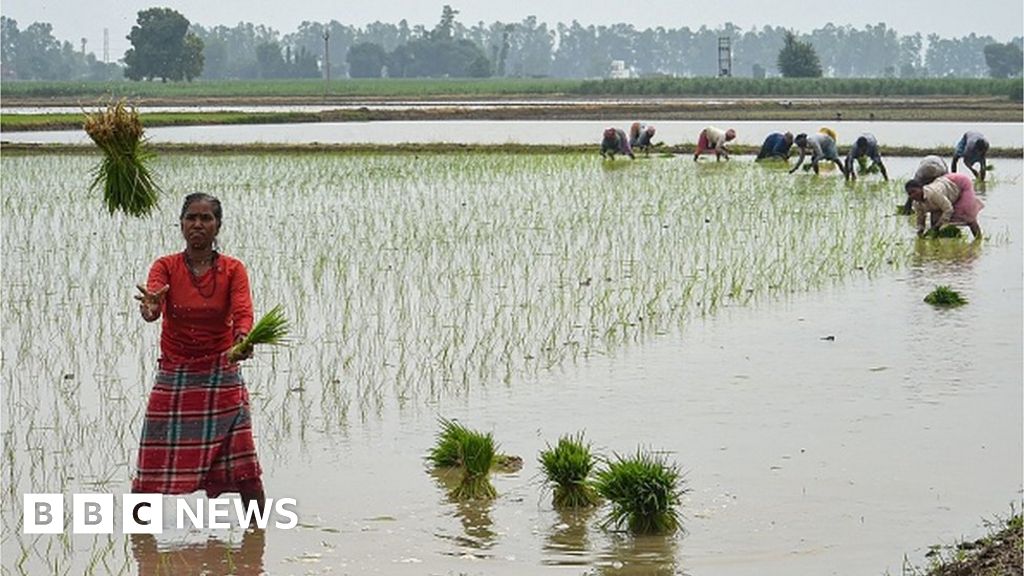The decision by India, the world’s biggest rice exporter, to impose a rice export ban on non-basmati white rice has raised critical worries about the solidness of worldwide food security and the potential for additional inflationary tensions.
The Rice Export ban comes in the midst of a background of supply disruptions, geopolitical tensions, and weather-related challenges that have collectively heightened anxieties over the availability and affordability of a staple food that billions depend on.

Also Read: Vegan Raw Food Influencer Zhanna D’Art Dies of Starvation
Sources Related to Rice Import and Export (For R&D)
- Rice global imports and top importers 2023
- Major rice importing countries worldwide 2022/2023
- The 10 Largest Rice Importers In The World
- Major rice exporting countries worldwide 2022/2023
- Rice Exports by Country
- World Rice Trade
- Top Rice Exporting And Importing Countries
Rice, a dietary staple for multiple billion individuals around the world, is a critical ware whose accessibility and reasonableness straightforwardly influence food security and social strength in numerous nations. India’s decision to end products of non-basmati white rice adds a layer of complexity to a generally unstable worldwide rice market.
As the top exporter of rice, India’s move can possibly upset supply chains, worsening existing worries driven by Russia’s withdrawal from the Black Sea Grain Initiative and escalating tensions between Russia and Ukraine. These factors contribute to an environment where food shortages are a real and growing risk.
The Rice Export ban on non-basmati white rice exports from India has set off fears of a flood in worldwide rice costs. The international rice market heavily depends on India’s inventory, making up around 40% of worldwide exchange.
With a significant piece of this supply unexpectedly inaccessible, bringing in countries might confront uplifted contest for the excess rice stocks, bringing about cost spikes.
Also Read: Unilever Food Solutions Future Menu Trends Report 2023
As of now, worldwide rice costs have been on the rise because of a mix of factors, including supply disruptions, weather-related challenges, and geopolitical tensions. India’s ban threatens to exacerbate these inflationary pressures, potentially leading to food price shocks in vulnerable economies.
The Rice Export ban’s effect will be intensely felt by importing countries, especially those heavily dependent on Indian rice. Numerous nations in Africa, Asia, and the Center East rely upon Indian rice as a urgent part of their diets.
In these countries, rice constitutes a significant portion of daily calorie intake, making its availability and affordability essential for food security and social stability.
Importing countries, already grappling with their own economic challenges and vulnerabilities, now face the prospect of reduced access to affordable rice, potentially pushing millions further into food insecurity.
Also Read: Netflix Bites: Netflix is Opening a Pop-up Restaurant
India’s decision to ban rice exports likewise highlights the international components of food security. International pressures, like those among India and adjoining nations, can impact exchange arrangements and worsen supply interruptions.
Moreover, the Rice Export ban might incite bringing in nations to look for elective source of rice, possibly stressing associations with India and diverting trade flows. In a world interconnected by trade and diplomacy, such actions can have far-reaching consequences, affecting not only food security but also broader geopolitical dynamics.
As the world wrestles with the likely results of India’s rice export ban, various strategies may be employed to mitigate the risks. Importing nations could explore diversifying their sources of rice, seeking partnerships with alternative exporters, and investing in domestic agricultural production to enhance self-sufficiency.
International organizations and governments might also collaborate to establish emergency food reserves and facilitate humanitarian aid to nations most vulnerable to supply disruptions.
Also Read: Ivory Coast: Heavy Rains Lower Cocoa Production



/cloudfront-us-east-2.images.arcpublishing.com/reuters/BUAWHPGLTFLPXJYYXCTB2Z4MA4.jpg)




















+ There are no comments
Add yours